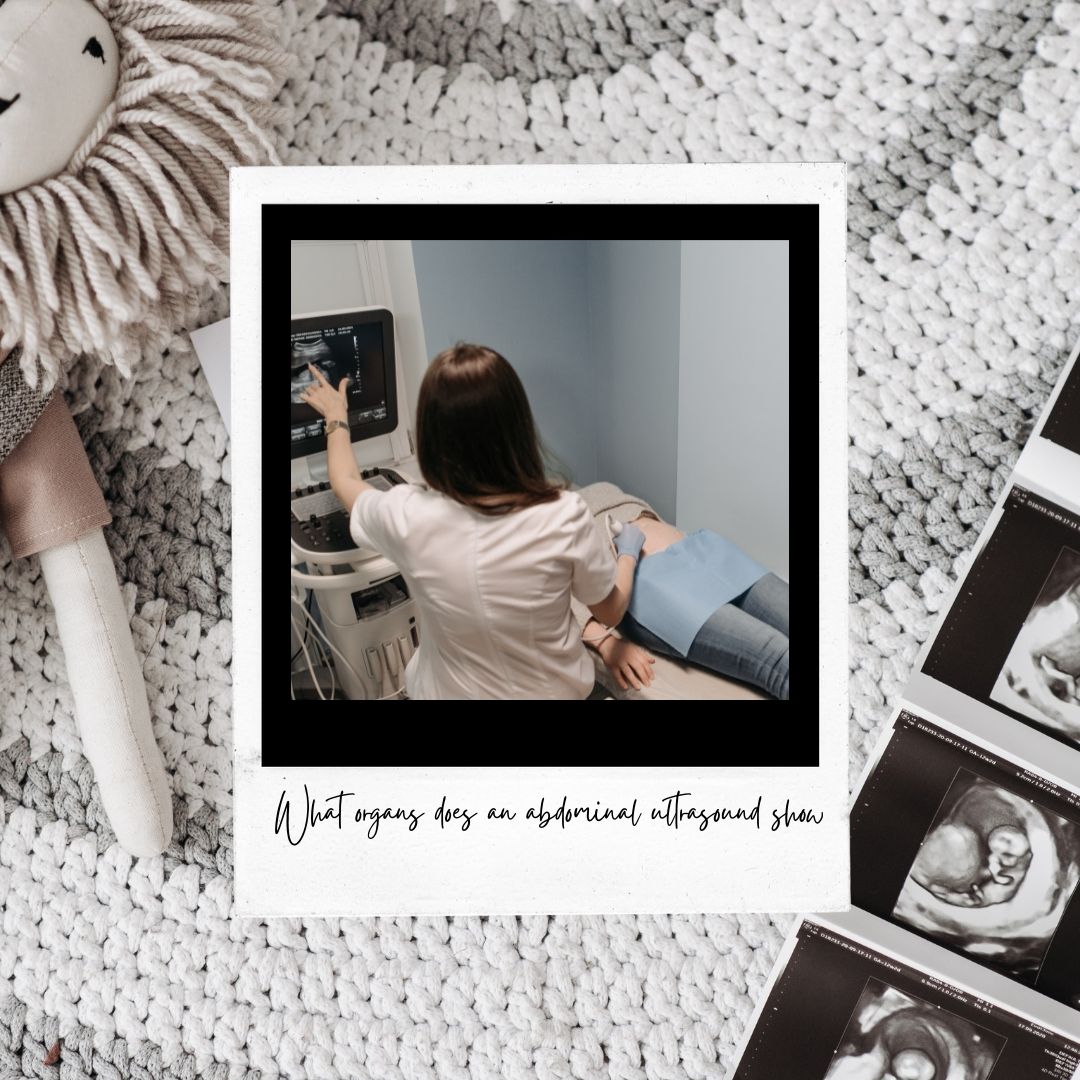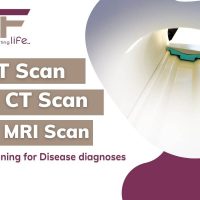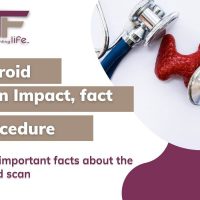CContents
What organs does an abdominal ultrasound show?
Tell me,
What is the most common imaging test in India you have heard of?
Is it an ultrasound?
Yes, it is!
The most common diagnostic practice to examine various health conditions concerning our abdominal organs & structure is an ultrasound or precisely an abdominal ultrasound. In this test, your doctor can see a range of organs, and they are –
- Liver,
- Kidneys,
- Gallbladder,
- Pancreas,
- Spleen,
- Colon,
- Appendix,
- Bile Ducts,
- Stomach,
- Small Intestine,
- Large Intestine,
- Uterus,
- Fallopian Tube,
- Ovaries,
- Ureter,
- Urethra,
- Bladder, and
- Abdominal Arteries & Veins, i.e., aorta and inferior vena cava, respectively!
Seems like a bucket list, indeed!
One process, examining all the different conditions of a series of organs in the human body!
No doubt, it is why abdominal ultrasound is considered the most common imaging test of recent times. The one that aims to diagnose both – routine and severe medical conditions!
In other words, we can say that an abdominal ultrasound is a diagnostic solution for the digestive system, reproductive system, urinary system, & gastrointestinal system altogether!
Are you not keen to know how an abdominal ultrasound serves in the diagnosis of the above-mentioned organs?
Well, if so, you immediately open door to a vast set of questions that begin with – 1) What is an ultrasound?
2) What is an abdominal ultrasound?
3) How is an abdominal ultrasound better or more significant than any other ultrasound method?
4) When do doctors ask for an abdominal ultrasound?
5) How do the organs appear on the abdominal ultrasound image?
6) How to prepare for an abdominal ultrasound?
7) How does an abdominal ultrasound take place?
8) Are there any setbacks of abdominal ultrasound?
9) What to do after an abdominal ultrasound?
Wait!
You can find all the answers to the questions in this article and utilize the insights as & when necessary!
So, let us no more waste our expensive time from the rigid schedules and quickly dive into the following.
Do you know what an ultrasound is?
The diagnosis in which the radiologist uses a wand-like instrument or probe called a transducer to fetch the images of your internal organs & structures is called an ultrasound. In this process, high-frequency sound waves – that you, of course, cannot hear or hear somewhat like a faint echo – take the stage to send electric signals to a computer screen where the structural or functional defect in your body stands clearly visible!
Alas! This method, also known as sonography or diagnostic medical sonography, may sometimes fail to provide an accurate image of your bones, blood vessels, and soft tissues! It is when your doctor asks for an alternative, like a CT scan. However, unlike a CT scan, ultrasound does not involve any ionizing radiation and is, therefore, free from post-diagnosis complications or setbacks.
Perhaps, ultrasound is a 99 percent safe process, and that is evident right from the use of such a test in monitoring an unborn baby!
Ultrasound can be – either an external and non-invasive method, or it can be an internal and minimally-invasive procedure. From this, you can already understand that there are various kinds of ultrasound, and one among them is the abdominal one – Non-Invasive & External!
In each ultrasound procedure, the transducer or probe is designed specifically for screening a definite body part. Hence, we can also say that ultrasound testing is a versatile technique. The one that came to the place with the development of state-of-the-art medical technologies!
Do you not want to know what the different types of ultrasound are?
Well, they are – 1) Endoscopic Ultrasound, 2) Duplex Ultrasound, 3) Doppler Ultrasound, 4) Color Doppler Ultrasound, 5) Triplex Ultrasound, 6) Saline Infusion Sonography, and so forth.
The ones you just came across hold variations in technique. Yet, there are some ultrasound methods that stand categorized in terms of the areas it tracks & locates.
And,
They are – 1) Abdominal or Transabdominal Ultrasound, 2) Vaginal or Transvaginal Ultrasound, 3) Rectal or Transrectal Ultrasound, 4) Breast Ultrasound, 5) Obstetric Ultrasound, 6) Pelvis Ultrasound, 7) Carotid Ultrasound, 8) Musculoskeletal Ultrasound, 9) Thyroid Ultrasound, 10) Prostate Ultrasound, 11) Scrotum Ultrasound, 12) Venous Ultrasound, and myriad more!
Now, you must be wondering what are the differences between all these practices, be it the ones categorized depending on the area of examination or be it the ones categorized in terms of technique!
We shall tell you all!
But, before doing so, you have to understand what an abdominal ultrasound is in specific as that is the main focus of our article today!
Do you know what an abdominal ultrasound is?
An abdominal ultrasound is nothing but the ultrasound where your abdominal organs lay assessed. It is an external process, and no invasion of your body shall happen. Therefore, a painless process thy be! In this process, your radiologist shall apply a lubricant or gel over the probe and move it over your abdomen until a proper real-time image is taken.
The gel allows sound waves to move back & forth in the area of examination. The computer screen shows the image depending on the amplitude or loudness of the sound waves, their pitch or frequency, and the time an ultrasound signal takes to return back to the transducer. Of course, this also concerns what type of body structure is the sound waves traveling through! For this reason, medical professionals also call it Transabdominal ultrasound!
As understandable, the process consists of a series of equipment, namely, a computer console, transducer or probe, and video monitor! This technique, on the same note, can act as a beneficial tool to guide some minimally-invasive treatment procedures like biopsy and fluid aspiration.
It is a quick & easy-to-use process and does not require an overnight stay in the hospital, clinic, or diagnostic center. It does not involve exposure to radioactive rays, and nor does it requires any sedation. Hence, the overall side effects, popping up likely in the case of diagnoses like X-ray or CT Scan, do not show up herein. Safe, indeed! In fact, an abdominal ultrasound is an inexpensive diagnosis as compared to other imagining tests.
In India, an ultrasound costs as low as Rs. 500 and sometimes can range up to Rs. 1500. Isn’t that quite cheaper than other diagnosis rates? I suppose it is! A diagnostic opportunity that all can avail of irrespective of the strength of your pockets!
However, no opportunity can escape the forthcoming disadvantages. An ultrasound can sometimes fail to give an accurate result. Troublesome images may appear when your bowel contains a lot of gas or when there exists a lot of abdominal fats. Likewise, an abdominal ultrasound shall not be able to penetrate the bones and determine a bone fracture or bone infections, if any.
With both its merits and demerits, abdominal ultrasound greatly varies from the other ultrasound methods. You can explore them how!
Abdominal Ultrasound Vs Other Ultrasound Practices: What are the Differences?
First and foremost, if we compare an endoscopic ultrasound with a diagnostic ultrasound like the abdominal one, we shall find that a piece of new equipment emerges alongside the probe. It is a small thin tube, flexible enough, and has a camera at the top & light at the bottom. This instrument is nothing but an endoscope that works in combination. In an endoscopic ultrasound, you are likely to receive sedatives that may bring down side effects to you, unlike in abdominal ultrasound.
On the other note, a doppler ultrasound just like a traditional ultrasound is painless and non-invasive. It stands requisite to estimate the blood flow through your arteries & veins. In this method, high-frequency sound waves bounce off the circulating Red Blood Cells (RBCs), subsequently showing images on the monitor. This technique may be a part of the abdominal ultrasound or may come into action when a traditional ultrasound fails to detect the problem in your abdominal aorta or vena cava.
Then come the duplex and triplex ultrasound which may also serve as a part of the abdominal ultrasound, offering two-dimensional and three-dimensional greyscale images of the tissues. Perhaps, it is a specialized interpretation used in diagnosis & therapy these days, evaluating the speed of blood flow to your abdominal organs and helping reveal blockages. So, we can say that this technique adds efficiency to your abdominal ultrasound, exposing the narrow aorta or vena cava. In the triplex ultrasound, there lay another specialty. That is – the highlight of the direction of blood flow in your abdominal aorta and vena cava!
The most recent development of medical science brought into the picture the technique called saline infusion sonogram or saline-infused sonography in which a small amount of salt solution is used to scan the organs accurately. Unlike a traditional abdominal ultrasound, this process is minimally-invasive and not a non-invasive one. It mainly serves in the visualization of the endometrium and endometrial cavity.
Well,
Now that we have a fair idea about how a traditional abdominal ultrasound works in contrary to the other new methods, it is crucial that we have a look at the differences an abdominal ultrasound holds from other traditional methods.
To begin with,
A vaginal ultrasound, another popular ultrasound practice, is very different from the abdominal one in terms of invasion. The former, i.e., the vaginal ultrasound, requires the insertion of the transducer through your vagina into the abdominal area. It means the process is invasive in nature. As a result, you may feel a little pain and discomfort while the diagnosis is on and may encounter certain post-diagnosis side effects like fatigue, dizziness, nausea, or vomiting. Besides, in a vaginal or transvaginal ultrasound, you have to keep your bladder empty for the accuracy of the result whereas, for an abdominal ultrasound, it is just the other way round. Meanwhile, only if you are a woman, the vaginal ultrasound shall stand applicable, while if not, the abdominal ultrasound shall serve.
Next,
The other commonly-practiced method, rectal or transrectal ultrasound needs you to keep your stomach & bladder empty before the test, similar to the vaginal ultrasound. Also, it may involve the use of sedatives at times! It includes invasion, unlike an abdominal ultrasound, even though that is minimal. As the name suggests, this method is undertaken mostly on men as they do not have the scope to undergo a vaginal ultrasound like women. So, we can say that while an abdominal ultrasound aims to detect problems of all genders, the rectal one is more specific to men.
On the same note, when an abdominal ultrasound tends to show different organs and their defects, an obstetric ultrasound is meant to see the living or dead embryo within your uterus and is used mainly during pregnancy.
Likewise, a breast ultrasound reveals the defects in your breast. A musculoskeletal ultrasound exposes the medical condition of your muscles, joints, ligaments, tendons, & nerves. A thyroid ultrasound investigates the condition of your thyroid glands, a carotid ultrasound evaluates your carotid artery and the blood flow within, and a venous ultrasound is an exclusive diagnosis of your veins.
By now, we are more or less accustomed to the fact that, unlike other ultrasounds, an abdominal one is multifaceted. In this regard, it stands vital for us to know why is it! Why do we call it multifaceted? What are the multiple conditions in which you may require an abdominal ultrasound?
Why not discover them right here?
When do you require an Abdominal Ultrasound?
Your doctor may recommend an ultrasound check-up when predicting a range of possibilities, like –
- Bladder Stones, Kidney Stones, or Gallstones,
- Gallbladder inflammation, also called Cholecystitis,
- Enlarged Spleen,
- Hepatitis or liver inflammation,
- Inflammation of the Pancreas, known as Pancreatitis,
- Diverticulitis, or in other words, inflammation of the colon,
- Gastritis or inflammation on your stomach lining,
- Gastroesophageal Reflux Disease (GERD),
- Fatty Liver Disease,
- Blood Clots in the Abdominal organs,
- Infections in your kidney, liver, bladder, or ureter,
- Infections in the gastrointestinal tract,
- Infections in the urinary tract,
- Blockage in the abdominal aorta,
- Collection of pus in the abdominal area,
- Polycystic Ovary Syndrome, or in short, PCOS,
- Enlarged Ovaries,
- Cysts and Tumors in the Abdominal organs,
- Appendicitis or inflammation of Appendix,
- Hernia,
- Peptic Ulcers,
- Celiac Disease,
- Pyloric Stenosis, i.e., the narrowing or thickening of the pylorus, one of the stomach muscles,
- Collection of fluids in the abdominal cavity,
- Kidney blockage or cancer,
- Liver cancer or tumors,
- Aortic Aneurysm,
- Endometriosis,
- Pelvic inflammatory diseases,
- Torsion of an ovary,
- Pregnancy or related conditions, and so forth!
Yes, various possibilities that your doctor predicts depending on your symptoms. She wants to confirm which one is it, from among the many, bearing almost similar signs and symptoms, and precisely why she wants you to pursue an abdominal ultrasound.
You must be wondering now what symptoms lead you towards up-taking an abdominal ultrasound! Here they go!
Think in yourself,
- Are you having persistent pain in your abdomen?
- Can you feel significant swelling in your abdomen?
- Did you have abdominal weight loss in the past few days?
- Are you suffering from pelvic pain?
- Is your pelvic or abdominal pain accompanied by fever?
- Are you having problems with bowel movements?
- Did you just find blood in your stools?
- Are you frequently urinating, particularly at night?
- Can you feel a severe tenderness the moment you touch your abdomen?
- Do you feel like vomiting all the time?
- Is your skin turning yellowish?
- Do you face severe abdominal cramps immediately after you eat?
- Are you going through prolonged diarrhea?
- Do you face difficulties in swallowing your meal?
- Do you witness a prolonged phase of constipation?
- Do you feel full even after eating very less food?
- Are you having chronic heartburn every now and then?
- Do you frequently suffer from gas & bloating?
- Are you witnessing vaginal bleeding amidst two menstrual cycles?
- Did you skip your periods for a long?
- Do you go through severe pain while having sexual intercourse?
- Did you witness an unusual vaginal discharge accompanied by an unpleasant odor?
- Is the color of your urine dark?
- Are you suffering from chronic fatigue?
- Do you feel pain while lifting anything heavy?
In either of these cases, your doctor wants to know what actually is bothering you.
And,
It is when you require an abdominal ultrasound!
How do the organs appear on the Abdominal Ultrasound Imaging: Explain!
Of course, in an image, the internal organs of the human body cannot show as it is. But, there are shades that allow your doctor to detect the issue. How so?
Take an example of kidney stones or maybe gallstones. How will they appear in ultrasound imaging? Well, on the computer screen, when the transducer hits the stones, shadows pop up behind them. That is how they get detected!
Now, let us say, you have a liver tumor or problem in the bile ducts, there shall be an increased reflectiveness in the diagram, and the image shall also show the size of the liver. In a similar fashion, if you have an enlarged ovary, the ultrasound imaging shall show the increased size.
When the ultrasound imaging show an endometrial thickness of about 14mm, a medical condition, like endometriosis, stands detected! When it brings before us some granule-like structure in front of the shadowed stomach wall, you know they are cysts.
If the red line depicting the blood flow in the ultrasound image halt at a point, your doctor knows there is a blockage.
Likewise, there are different spots and markers appearing in the image that only your radiologists and doctors can identify. So, once you get your abdominal ultrasound report, do not hesitate to take an appointment with your doctor asap!
Preparation for an Abdominal Ultrasound
After gathering insights on what organs an abdominal ultrasound show, when & why you require an ultrasound, and how they appear on the imaging, you must be keen to know how to prepare for it.
Your wait is over!
In this segment, we are going to discuss the preparations that you must take before availing of an abdominal ultrasound test.
- The most crucial thing about the preparation is you have to keep your bladder full before entering the examination room. It is because drinking plenty of water shall help push the bowel out of your pelvis, further allowing the transmission of sound waves to the target organs of the diagnosis. Also because your bladder volume has to be measured during the scan!
In this context, 32 ounces of water shall suffice, and you have to take it at least 1 hour before your test. You may opt for other fluids if drinking so much water seems problematic, but you have to inform your doctor before doing so!
- The second thing about the preparation is that you have to wear loose clothes. The ones that are comfortable and easy to slip off or remove for exposing the abdomen during the test! Although most diagnostic centers, clinics, and hospitals, shall provide you with a gown to wear, you must prepare for the circumstance where it is not!
- Next, let us come to a preventive step! What is it? I believe you obviously do not want your test result to appear inaccurate. In that case, you have to avoid wearing any kind of jewelry and leave all metallic objects at home. It is because those objects can disrupt the diagnosis & hamper the dexterity and precision of your test result.
So, even when you have any plans after the abdominal ultrasound session and want to dress up beautifully, leave them before you enter the test lab.
- Are you on some medications? If so, you have to consult with the doctor on whether or not to use them before & after the test. In some cases, your doctor may ask you to continue them or may suggest an alternative that works. Please make sure to go by each & every word your doctor recommends!
- Another instruction for abdominal ultrasound preparation involves your diet. It is medically advisable to avoid eating spicy food or too much food for a few days before the test.
Simultaneously, you need to pause alcohol consumption or smoking before an abdominal ultrasound. A simple diet shall serve great! When in doubt concerning what to eat and how much to eat, you have to talk to your doctor!
- On the day of the test, please try to take someone along with you to the hospital, clinic, or diagnostic center as a precaution! Even though an abdominal ultrasound does not bring any side effects, you may need someone as your support in case you feel uncomfortable. Besides, driving alone is advisable after the test, so you shall need someone to drop you back home or to your workplace.
- Furthermore, make a file of all necessary medical documents, be it the list of your medications, your doctor’s prescription, or previous test reports. Submit them to the reception if and when asked for!
- Above all, you have to carefully read the consent form before signing it. This form shall entail all details about the test, its possibilities, and everything. You shall always have a choice to opt-out if you find anything problematic in it.
Is that all? Perhaps, it is! For more tips on abdominal ultrasound preparation, your doctor shall assist!
Process of an Abdominal Ultrasound
After the preparation, the abdominal ultrasound shall begin. Are you keen to know what exactly will happen to you when you are inside the test lab?
Relax! The ones in charge of your abdominal ultrasound are diagnostic professionals. One among them shall be the radiologist instructing the entire procedure. One shall be the sonographer or ultrasound technician who shall carry out the test following the radiologist’s instructions, and another staff to help when you need something.
And,
It begins!
- When the medical staff calls you to the ultrasound lab, step in! You shall find various medical apparatus & technologies in the room. At the center, there shall be an examination table where you have to lie down for the diagnosis. I hope you wore the gown or loose clothes already. This is your time to slip that off and expose your abdomen.
- After doing so, a medical caregiver shall approach you and apply the lubricant properly over your abdomen. The gel is likely to eliminate the air in-between your skin & the transducer, subsequently improving the passage of sound waves and corollary accuracy of the ultrasound result!
- Then, another caregiver, supposedly the ultrasound technician shall, on instructions from the radiologist, move the transducer back & forth over your abdomen. This shall allow ultrasound imaging to appear on the monitors. As soon as the sound waves encounter any functional or structural defect, they shall send electric signals, making the defect traceable.
- In the meantime, your radiologist may request you to stay reserved in a single position or move to another side in order to extract images from different angles. But do not worry! The test may take only 15 minutes or so! After that, you shall be free to move as you want.
- Once it stands complete, the medical caregivers shall release you, and then you can go out of the test lab and meet whoever came with you! Now, you can also go to the washroom and empty your bladder. No doubt, controlling urine for a long time is a difficult task! So, peeing shall give you relief. At this time, you can wash out the extra lubricant in your body if feeling uncomfortable with it and further dress up like you came.
- After that, the medical staff shall ask you to wait for some time. For this purpose, they may even take you to a waiting room. It is because checking whether or not any side effects are arising is a part of their responsibility. Sometimes later, they shall inform you to leave.
That’s it! You can now go back to your normal schedule and wait for the results to come.
Risk Factors: Are there any?
After the test stands over, you shall certainly think about the side effects. But, let me tell you that – in abdominal ultrasound, there aren’t any! Yes, you got it right. You do not have to bother yourself or panic after an abdominal ultrasound. The painless and non-invasive method does not lead to any risky condition, nor does it bring any side effects.
Although holding the bladder for such a long time may create a little discomfort in your abdominal area, that shall go away on its own!
Also, if you actually have any of the abdominal deficits mentioned in the previous sections, you may witness those symptoms again & again. But none of them are because of the ultrasound!
Steps to follow after an Abdominal Ultrasound
When you go back home, there are not many mandatory steps that you have to undertake for the post-ultrasound period. However, in order to curb the medical condition that you are having at the present, try following the basic health & hygiene routine where –
- You do a few exercises daily,
- You eat fruits, vegetables, & protein-rich foods,
- You avoid alcohol & tobacco,
- You avoid processed or sodium-rich meals,
- You shower daily and wear clean clothes,
- You avoid staying awake for long and go to sleep timely, and
- You take natural supplements on the recommendation of your doctor.
That would be enough!
Conclusion:
Hey, you still here, listening to me, reading with me? If so, then primarily, let me thank you for sparing your expensive time in reading this article. I hope you got the answers you were looking for and can now act accordingly, whenever you come across an abnormal symptom concerning your abdominal organs.
For more queries, you can drop your message to us at www.healthfinder.in. If you wish to leave an email, the address is [email protected]. We shall try to answer them back immediately or write again, the next day, trying to resolve all your questions!
Till then,
Stay healthy, and stay on your toes!
You may also Read this article Is Vaginal Ultrasound Painful?











Comments